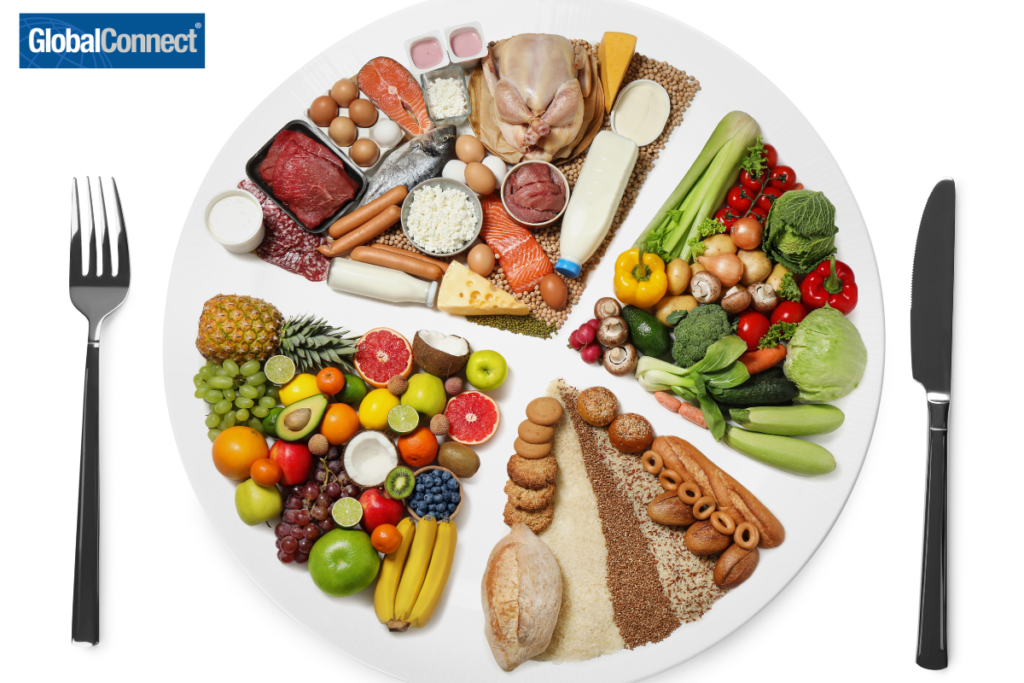Harvard University’s Healthy Eating Plate is an excellent guide to getting the proper nutrition in your meal. It is based on the latest nutritional research and provides an easy way to ensure you are getting the right nutrient-rich foods on your plate. The Healthy Eating Plate shows you how much of each food group you should be eating and gives examples of the healthiest options to eat for each food group.
The Healthy Eating Plate is a better guide for nutrition than the MyPlate guide as it
- emphasizes quality over quantity.
- recommends healthier protein options, while the MyPlate guide does not specify better protein options.
- recommends healthier fat choices such as oils, while the MyPlate guide does not include any info on fats.
- encourages water intake, while the MyPlate guide encourages too much dairy milk intake and says nothing about juices or sugar drinks.
Let’s dive into what the Healthy Eating Plate is all about:
Vegetables and Fruits.
The Healthy Eating Plate starts with a base of primarily vegetables and fruit, which should make up most of what you eat. These foods contain nutrients essential for good health, including fiber, vitamins, minerals, and antioxidants. Aim to fill half your plate with these healthy options. You also want to be sure to eat various colored vegetables and fruits. The beautiful colors of these fruits and vegetables aren’t just for show; they also contain phytonutrients, which protect you from free radicals, bacteria, and toxins. Hytonutrients also support a healthy metabolism.
Healthy Grains
The next section of the plate is for healthy grains. These include eating a variety of whole grains, such as whole wheat bread, oatmeal, quinoa, whole wheat pasta, and brown rice. A quarter of your plate is the recommended serving size. These foods are excellent sources of fiber, B vitamins, and minerals. Choose these options instead of refined grains such as white bread or white rice, which have been stripped of their nutrients.
Healthy Protein
The third section of the plate is for healthy protein options. A serving size of a quarter of your plate is suggested by the Healthy Eating Plate, which should be a lean protein that is low in saturated fat, such as grilled chicken or fish, tofu, beans, nuts, legumes, eggs, and limiting red meat and processed meats. These options are not only rich in protein but also contain essential nutrients like iron, zinc, and omega-3 fatty acids.
Healthy Oils
Another small section of the Healthy Eating Plate is for healthy fats. While fats are essential for good health, not all fats are created equal. The Healthy Eating Plate recommends choosing healthy fats like olive oil and avocado oil and limiting unhealthy fats like saturated and trans fats.
The Healthy Eating Plate does recommend other plant oils as a healthy option, although some studies and experts say that some vegetable oils greatly contribute to heart disease. Carefully consider all the evidence before deciding what’s best for you.
Water
Lastly, the Healthy Eating Plate encourages water as the best beverage choice. You should drink water throughout the day to stay hydrated and to support your body’s functions. Drink plain or sparkling water, unsweetened tea, or coffee. Avoid sugary drinks like soda and fruit juice, which can add a lot of sugar and calories to your diet without providing any nutritional benefits.
